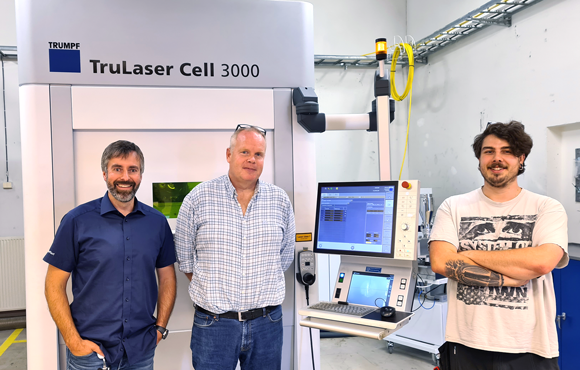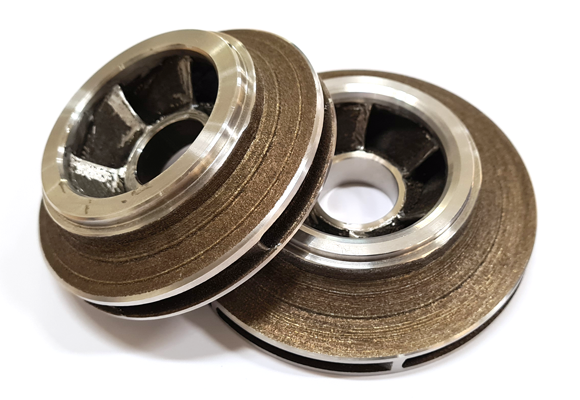Nordic Additive Manufacturing reports positive results using DED AM technology
January 27, 2022

After using Trumpf’s Laser Metal Deposition (LMD) Additive Manufacturing technology, a form of Directed Energy Deposition (DED), for five years, Nordic Additive Manufacturing (NAM), Raufoss, Norway, recently spoke to Norwegian manufacturing magazine Maskinregisteret about the positive results it has seen using the technology.
The company began using the process in 2017, after purchasing its Trumpf TruLaser Cell 3000, and uses the technology for applications including the construction of new parts, repairs, modifications and additions to existing parts.
“It is not only toolmakers and the car industry that are our customers; everyone who makes something in metal are potential customers,” stated Magne Manskow Vik, part of the NAM team. “There is a lot of talk that we can create completely new products with, for example, internal cooling ducts, and yes, we make it – in fact, we make quite extreme things, but don’t forget that we can also repair and improve things that would otherwise have to be replaced with a new component.”
Based on the results it has seen, the company stated that it believes laser-based DED should see further adoption across industry, beyond its currently quite niche applications.
“When today’s designers gain full insight into the technology, we will have already made great gains in innovation of completely new products we have never seen before,” added Sture H Sørli, General Manager at NAM**. “**You can only speculate about what is possible and what it will provide, but the fact that we can manufacture components with completely new properties will provide great benefits in terms of how small things can be made, improved processes and previously impossible product design.”
One challenge the company has faced in its implementation of DED are strict Norwegian standards, particularly within the oil industry; this has proven difficult to counter, because DED is not described in the NORSOK standard, a collection of industrial standards developed by the Norwegian petroleum industry to ensure adequate safety, value-adding and cost effectiveness for petroleum industry developments and operations.
“We are working to get ISO certified, but that is not the only obstacle,” continued Sørli. “The LMD [laser-based DED] process is not described in the NORSOK standard. Our solution is that we deliver both undocumented jobs to the industry that does not require it, and then we piece-certify each component we deliver to customers who require this. We test a lot, the customer often does too. Our close collaboration with Sintef gives good results. In addition, Manulab at NTNU Gjøvik performs CT scans, so we usually reach the goal with the documentation.”

NAM reported that it has benefited from its partnership with some of the industrial heavyweights among its owners. In addition to its primary owner, the investment fund Komm-In, companies such as Nammo, Sintef Manufacturing, Norse Industries AS and Sparebank 1 are co-owners, as well as Tor Henning Molstad through the companies Molstad Model & Form AS and Molstad Eiendom AS. Molstad is also active as chairman of the board.
“We are in a good company with solid and competent owners who give us the opportunity to develop and build competence. In addition, we gain great trust through the fact that we receive inquiries and assignments because they have faith in us,” commented Tor Henning Molstad. “NAM is located in the middle of the industrial park in Raufoss, which has meant that most production companies are on our customer list. Now it’s time to be discovered in the rest of the country. To get a proper lift, there is a desire to grow.”
“We envisage bringing in players who make it possible with larger investments,” Sørli added. “It has taken time to build competence, we have gained it, and now we are starting to make money. Then it is natural to increase capacity and build the company further with new technology and more people. We invite all interested parties to challenge us so we can show what we can produce and at the same time we would like to enter into a dialogue with interested partners.”
NAM is currently participating in several research projects in the EU, with partners including Fraunhofer, Kongsberg Maritime and other German and Italian entities. “With additive production, you can achieve a fast path from idea to finished product; we have an example of a component we made for the customer that resulted in the customer being able to reduce the cycle time from two hours down to four minutes,” he concluded.
















